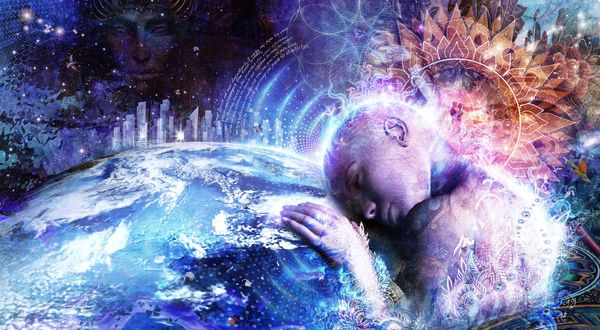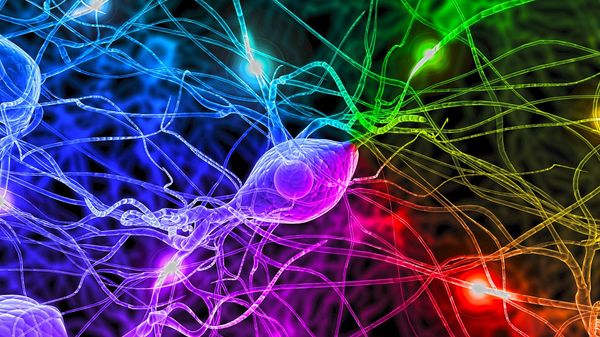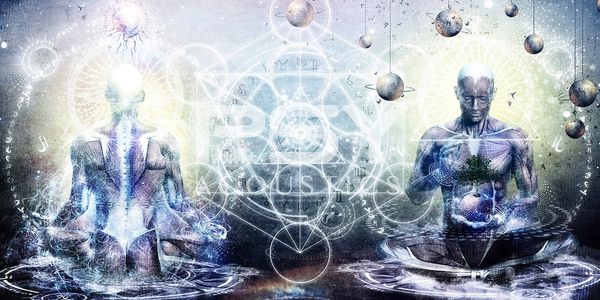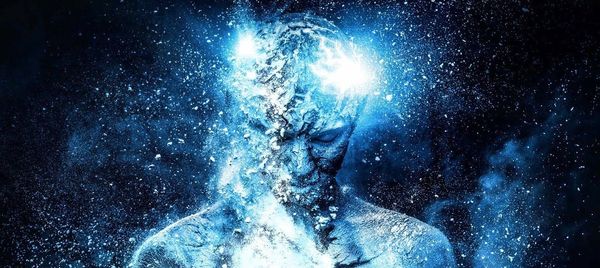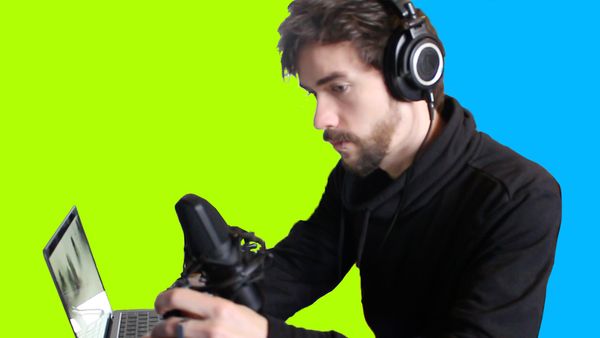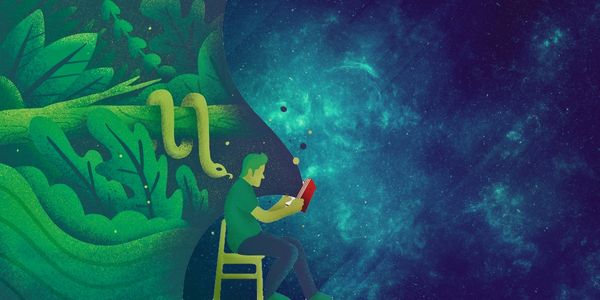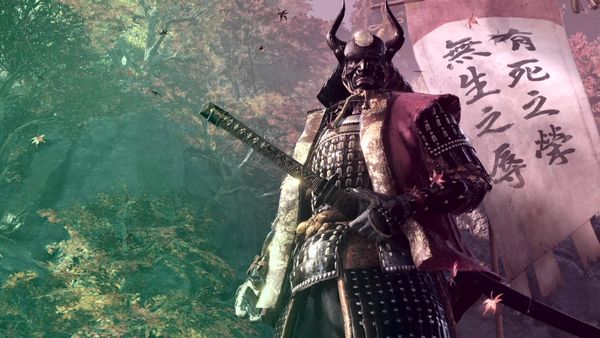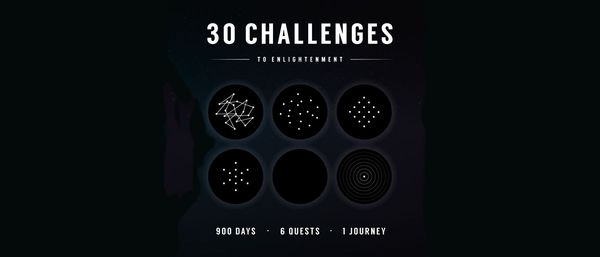Ben Fishel • • 10 min read
Self(less)-Help: How to Lose Yourself to Improve Yourself

“The self of one stage becomes the tool of the next.”
— Jean Gebser
Let me start by saying something that’s a little controversial.
It may even offend some of you reading this.
But I don’t want you to waste any more time or money on this multi-billion dollar sink-hole. So I’ll just say it.
Self-Help is Bulls**t.
Look, don’t get me wrong. It may make you feel better. It may help improve your life circumstances or get you out of your comfort zone or increase your income.
But it doesn’t work. It doesn’t do what it’s supposed to do.
It’s a band-aid solution that often leads you to develop an imbalanced psyche that naturally gravitates towards a neverending feeling of incompleteness.
The discomfort that drives you to self-help is never permanently alleviated by the self-help content. And everything the industry does for you could be more effectively achieved by doing something very different.
By taking a step outside of yourself. What I like to call Self(less)-Help.
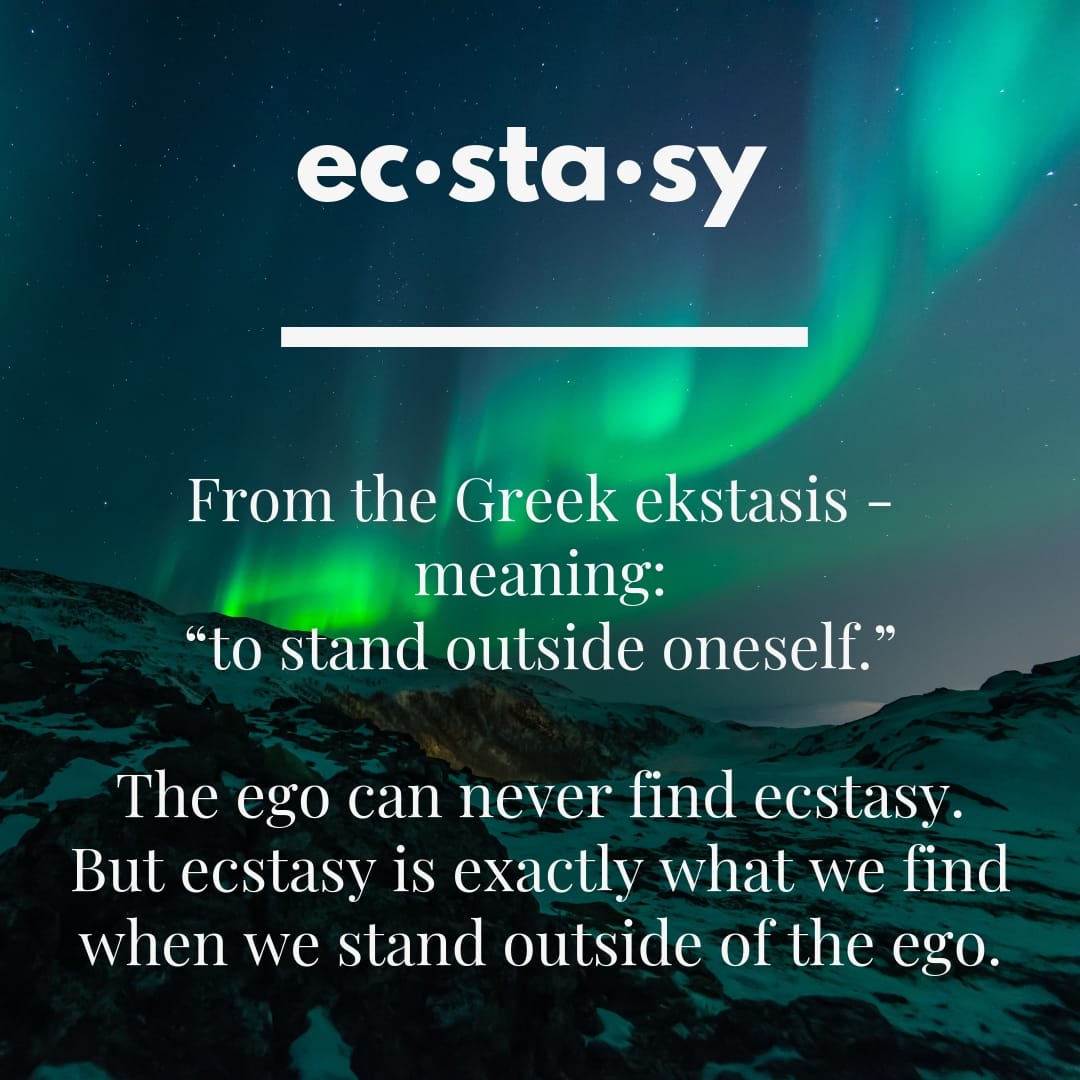
The Pyramid of Self
“The relationship between the individual and the environment is so extensive that it almost overstates the distinction between the two to speak of a relationship at all.”
— Bruce Wexler, Professor of Psychiatry Yale University
When physiologists look at the human body, they categorize it into features based on structure and function. Arms, legs, heart, lungs, hands, feet, eyes, nose. They also place these features into a basic hierarchy, vital organs are more important than toes for example.
Neurologists do the same to a certain extent with the brain; as do psychologists with the mind.
When we look at our ‘selves’ however, we don’t have a very clear cut map.
What makes up our self? Is it our bodies? Our brains? Our personalities? Our egos?
The reality is that our selves have a number of overlapping parts that we need to pay attention to if we want to live a balanced and integrated existence.
Enter: The Pyramid of Self.
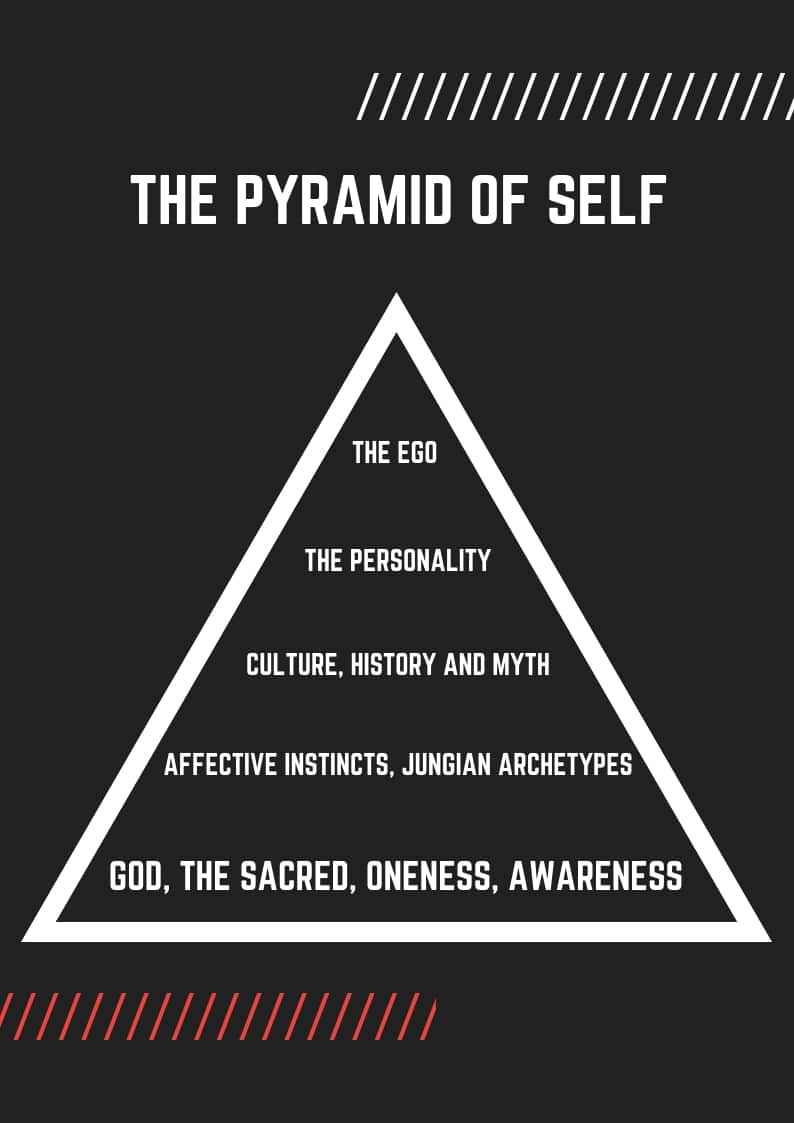
The Ego.
Depending on who you ask, you’ll find a number of different definitions for the ego. Some will call the ego the small ‘s’ self, whereas the big ‘s’ Self, will encompass all aspects of the Pyramid of Self. In this model, we’ll just keep it as simple as possible and define the ego as the part of our self that identifies with your experience. You can locate the ego by feelings separateness, self-importance, and ownership. When we lose touch with our Ego we may completely leave our place in the world behind.
Books that explore the Ego:
- The Secret – Rhonda Byrne
- How to Win Friends and Influence People – Dale Carnegie
- You Are A Badass – Jen Sincero
The Personality.
The personality is the individual character structure and temperament that makes up your body and mind. This is shaped by both nature (genetics, neurochemistry etc.) and nurture (environment, upbringing). We tend to be relatively inaccurate when predicting which parts of our personality can and can’t change. When we lose touch with our personality, we may feel stagnant and inauthentic – this often happens when we spend lots of time in a job that forces us to play a role that doesn’t come naturally to us.
Books that explore the Personality:
- The Six Pillars of Self-Esteem – Nathaniel Branden
- The 7 Habits of Highly Effective People – Steven Covey
- Awaken the Giant Within – Tony Robbins
Culture, History and Myth.
Our shared culture, history and myths are the stories and narratives that shape our thought. We currently live in a culture shaped by an economic story, so our modes of thinking are deeply influenced by economic language. When we lose touch with our cultural history, we feel isolated and disconnected from the rest of humanity, we may begin to feel empty, or like something is missing.
Books that explore culture, history, and myth.
- Myths to Live By – Joseph Campbell
- The Courage to Create – Rollo May
- Monoculture: How One Story Is Changing Everything – F.S. Michaels
Affective instincts/ Jungian Archetypes.
Our affective instincts are the emotional structures that make up our unconscious mind. They’re deeply embedded in our nervous system and define what it is to be a human, a mammal, and even a living organism. When we lose touch with our instincts we often repress them, and they then express themselves in very unhealthy ways.
Books that explore Affective Instincts
- The Neurobiology of the Gods – Erik D. Goodwyn
- Modern Man In Search of a Soul – Carl Jung
- Metaphors We Live By – George Lakoff and Mark Johnson
God, The Sacred, Oneness, Awareness.
We all know what a higher power means. Ask even the staunchest atheist to say what God ‘would’ mean to them, and they will be able to come up with a powerful idea. It is that ‘thing’ that is infinitely more important than we are. When we lose touch with God we may become hyper-rational, self-centred, and hedonistic.
Books that explore God, The Sacred, Oneness, Awareness
- The Bhagavad Gita
- The Path of the Yoga Sutras: A Practical Guide to the Core of Yoga – Nicolai Bachman
- Cutting Through Spiritual Materialism – Chogyam Trungpa
This model of the Self isn’t carved in stone nor is it verified (or verifiable) by empirical data, it’s just a roadmap to orientate your experience. You may find that you come to the conclusion that there are different categories to use, or that the hierarchy employed here needs tweaking. There are two rules however that are important to keep in mind.
“The order that is most real is the order that is most unchanging – and not necessarily the order that is most easily seen. The leaf, when perceived, might blind the observer to the tree. The tree can blind him to the forest.”
— Jordan Peterson, 12 Rules For Life
Rule #1: The Ego is the most contracted and least fundamental part of ourselves, and that God or awareness or oneness, or whatever you wish to call it, is the most expansive and fundamental part of ourselves.
Rule #2: The smaller parts of the Self should serve the larger parts and not the other way around. Consider what may happen when we violate this rule.
- The ego uses the sacred for spiritual materialism e.g. a Christian may pray to God and ask what god can do for him or her, rather what he or she can do for God.
- The Ego uses the instincts for sexual hedonism, infidelity or violent aggression.
- The Personality uses culture and history to justify prejudice.
On the other hand, when we live according to the hierarchy of the pyramid, archetypical instincts may use the personality for art and creative expression, and the sacred may use the ego for compassionate action.
Disconnection and Imbalance in the Modern World
Again, think of the pyramid as something that serves an orienting function. You should be aware of and attend to all parts of yourself whilst moving towards an expansive, rather than constricting, orientation.
This pyramid is fundamental, all parts are necessary, even the most enlightened beings in human history have only been able to remove the ego from their pyramid of self, their personality, culture, and instincts all remain largely unchanged.
However, the way I see it, there are two problems with the Pyramid of Self in the modern world.
Firstly, disconnection. We live in a world where each part of this pyramid is often disconnected from the other. In order for a healthy psyche to manifest, we must allow information to flow freely between each constituent part of the Self.
Secondly, imbalance. In modern western culture, the pyramid is very top heavy. You might even say it’s been flipped on its head. We place the utmost importance on individualism and the ego, whilst we work hard at self-help to improve our personality in the name of the ego. Occasionally self-help may tap into our shared culture and history, and somatic bodywork or Jungian active imagination may tap into our affective instincts.
What happens if we make the ego the base of the pyramid? Well, it becomes an unbalanced structure. And when it faces any challenge it can easily topple over, at which point our entire value structure is called into question and we may enter an existential crisis.
As I mentioned earlier, we have a hierarchy of bodily features, just as we do for the features of our Self. Putting our egos first is equivalent to leaning into a fire face first to protect our toes. Our egos, like our toes, serve a function, but it’s very much a secondary function. Our face, on the other hand, contains our eyes, ears, and mouths, all of which are vital and primary to our experience.
Contracted Self vs Expanded Self
Earlier this year I stumbled across a textbook that gave a lot of structure to ideas I’ve been exploring for some years now. The book was The Oxford Handbook of Hypo-egoic Phenomena, and it summarised the research into what was now being referred to as Hypo-egoic states.
According to Kennon Sheldon, Hypo-egoic states refer to a mind-state where “self-awareness is low and whatever self-relevant thoughts that arise are present-centred, people’s responses are minimally influenced by their self-relevant thoughts and they can be said to be functioning hypo-egoically.” This has also been coined ‘the quiet ego’ by some researchers.
Hyper-egoic states, on the other hand, are those states of mind in which the opposite occurs, we become self-absorbed and self-centred.
For anyone even remotely familiar with the great mystical traditions, there’s nothing special about the idea. But to see these altered states of consciousness being explored by one of the most well recognized academic publishers in the world was, to me, an incredibly optimistic sign.
The terms hypo-egoic and hyper-egoic are, unfortunately, not very easy on the ear. Therefore, for the purpose of this article, I’ll be referring to a hypo-egoic state of mind, as your expanded self, and a hyper-egoic state of mind, as your contracted self.
Here is a summary of some of the findings in the research of Hypo-egoic Phenomena:
The Contracted Self
- Prone to suffering, anxiety, and depression
- More prone to cognitive distortions and reactionary thinking
- Can become possessed by ideas
- Is obsessed with time, and is therefore impatient
- Attention orientated towards the future and the past
- Constantly confused, and not ok with the unknown
- Fear-based decision making
- Less compassionate
The Expanded Self
- Resilient to suffering, anxiety, and depression
- Less prone to cognitive distortions and reactionary thinking
- Is less personally attached to ideas
- Less concerned with time, and more patient
- Attention focused on the present
- Comfortable with the unknown, less feelings of confusion
- Information-based decision making
- More compassionate
“Although wisdom has been conceptualized in a number of ways, most definitions include the ability to take a broad, open, and non-egocentric perspective on problems and their solutions”
— Baltes, Gluck, & Kunzmann, 2002
5 ways to expand yourself: living from the base of the pyramid
Expanding yourself always starts by developing more control over your attention. For millennia the mystic traditions have known that the proper use of the mind allows autonomy by allowing you the capacity to consciously access each of these parts of you.
Here are 5 scientifically proven ways to expand your Self.
#1. Lose yourself in meditation and prayer
Aside from psychedelics, meditation and prayer are the longest lasting practices we have to enter your expanded self. In fact, it could be argued that the ultimate aim of meditation is the practice of self-expansion until the ego is minimal or non-existent.
#2. Lose yourself in Inquiry
Self-inquiry is a particular type of meditation that requires a degree of concentration that may necessitate previous meditative experience. The aim of self-inquiry is to question your ‘self’ until the more contracted parts of you are stripped away. In Hinduism this is known as Jhana Yoga, or the Yoga of Knowledge.
#3. Lose yourself in the flow-state
More commonly known in an athletic context as ‘The Zone,’ the flow-state is an altered experience of consciousness whereby we face a challenge that is appropriate to our competence. The concept of flow-state was first expanded by Mihaly Csikszentmihalyi, through the study of athletes, artists, musicians, and dancers to understand how and why their sense of time, effort and self were distorted, while their performance was greatly improved. A well-known example of the flow-state is the elusive runners high. Other practices such as food, water, and sleep deprivation can induce a similar state.
There are subtle differences between the expanded self and flow-state, and there is still debate as to whether or not the lower self-awareness is experienced in flow. Other components, however, such as increased positive emotion and resilience are similar.
#4. Lose yourself in psychedelics
It would be amiss to not mention the potent potential of psychedelics to allow you to enter an expanded state of mind. A word of warning, however, all of the other methods on this list require a certain degree of effort, because taking psychedelics does not, it can lead itself to dependency. They should always be done with careful thought, ritual and respect for the substance.
#5. Lose yourself in community
In the 20th century, we saw the great danger of what happens when pseudo-collectivist ideals are driven by the egos of individuals. If you’ve ever been part of a successful sports team, a close group of friends, or even at a meditation retreat, you can see how profound it can be to lose yourself in a community.
Conclusion
Living from an expanded self is not just something that will help you. In fact, it’s good for everyone in both the short and long-term. As more and more people live from a less self-centred place, they will begin to understand each other more and act in less irrational ways.
I believe this is the next step in human evolution. It will not lead towards some sort of spiritual utopia, so don’t get your hopes up. But it will lead to more compassion and connected societies, and that’s exactly what we should be working towards.
And when it comes to self-help and feeling better about ourselves, there is a fundamental paradox we must overcome; the only way to feel as if you are the centre of the universe is to remove yourself from the centre of that universe.


